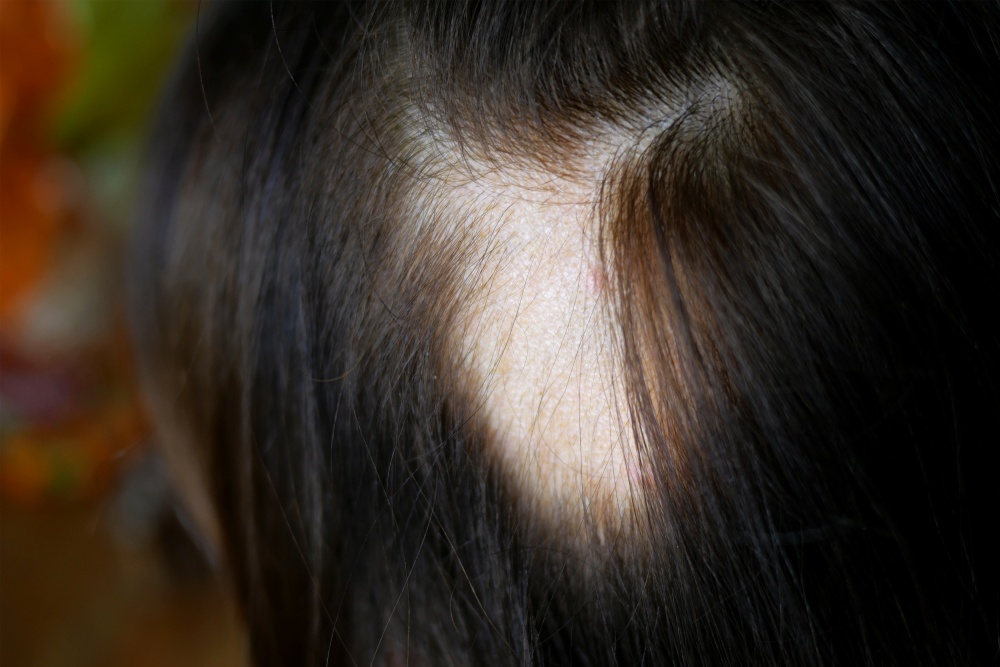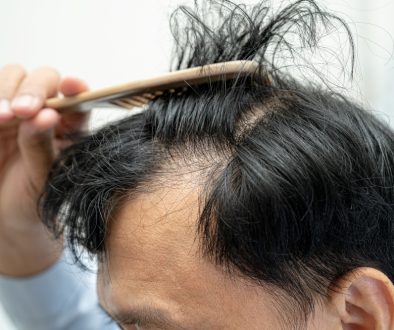What is the Difference Between Scalp Micropigmentation and FUE?
If you’ve been dealing with hair loss, you’ve likely heard of scalp micropigmentation (SMP) and follicular unit extraction (FUE). At first glance, they might seem to promise similar results—both aim to improve the appearance of hair density—but the way they work, and the outcomes they deliver, are fundamentally different. One relies on creating the illusion of hair through pigment, while the other involves relocating real hair follicles to thinning or balding areas.
Knowing how each works, and where they may or may not be suitable, is an important step before making any decision about your hair restoration journey.
Understanding Scalp Micropigmentation
For some, the challenge of hair loss isn’t about regrowing strands. Instead, it’s about creating the look of density and redefining the hairline.
Scalp micropigmentation takes a visual approach to this, using cosmetic pigmentation to replicate the appearance of tiny hair follicles. During the procedure, a technician applies micro-dots into the scalp’s upper skin layer, matching your natural hair colour and pattern. The result is the illusion of thicker hair or a closely shaved style, depending on your needs.
Advantages of Scalp Micropigmentation
While it doesn’t produce actual hair growth, SMP can offer a consistent, low-maintenance solution for those seeking an alternative to surgical methods. Some of the key advantages include:
- No surgery required: Achieves the look of fuller hair without any incisions or follicle extraction.
- Quick recovery: Minimal downtime compared to surgical hair restoration.
- Immediate visual improvement: Results are visible as soon as the procedure is completed.
- Suitable for advanced hair loss: Can create uniform coverage even without healthy follicles.
- Scar camouflage: Helps blend and conceal scars from hair transplants or injuries.
- Works with existing hair: Adds the look of density in thinning areas to blend with natural strands.
SMP can thus be considered by individuals who prefer a less invasive approach or are not candidates for surgical transplantation, but it’s important to
Understanding FUE Hair Transplant Treatment
FUE is a hair transplantation procedure that relocates healthy hair follicles from donor sites—usually the back or sides of the scalp—into areas affected by thinning or balding. Each follicle is individually extracted, then implanted into the targeted areas to mimic natural hair growth patterns.
Because the process involves small, individual extractions rather than large tissue strips, it is considered minimally invasive, often mitigating the risk of discomfort and visible scars. When successful, the transplanted follicles continue to grow like natural hair, offering a lasting change in density for suitable candidates.
However, as with any medical procedure, outcomes vary, and it is important to have a thorough consultation to understand expectations and potential limitations.
Advantages of Hair Transplantation
For those who want to restore natural hair density using their own follicles, FUE offers a practical, long-term option. Some of the main advantages include:
- Uses your own hair: Ensures a natural match in texture, colour, and growth pattern.
- Grows and styles like natural hair: Once healed, you can cut, colour, or style as desired.
- Minimally invasive: Smaller incisions often mean reduced discomfort and faster recovery.
- Discreet scarring: Extraction points are less noticeable, even with shorter hairstyles.
- Potentially permanent results: Successful grafts can continue to grow for years.
- Customisable coverage: Can target specific areas such as hairlines, crowns, or larger thinning zones.
Key Factors in Deciding Between SMP and FUE

Not sure whether to choose SMP or a FUE hair transplant? Your decision should depend on a few important considerations.
Some of the factors to weigh include:
- Stage of hair loss: FUE works best when there is enough donor hair available. Those with advanced baldness may find SMP a suitable option.
- Desired permanence: FUE can offer lasting results with successful grafts, whereas SMP pigments gradually fade and may require touch-up sessions.
- Procedure outcomes: FUE produces actual hair growth from transplanted follicles. SMP creates the appearance of fuller hair but does not generate new growth.
- Maintenance requirements: SMP may need periodic colour refreshes due to fading from UV exposure, while FUE may require future sessions only if hair loss progresses.
- Donor hair limitations: FUE depends on healthy donor follicles, which can restrict how many times the procedure is performed. SMP has no such limitation.
- Suitability after prior procedures: SMP can also be used to enhance or camouflage scars from previous hair transplants.
Comparing Recovery Times
When weighing up SMP against an FUE transplant, recovery time is often another deciding factor. FUE typically requires one to two weeks for the scalp to heal and for transplanted hairs to settle. During this period, you’ll need to follow post-procedure guidelines, which may include gentle cleansing, avoiding strenuous activity, and attending scheduled follow-up appointments to monitor progress. Results emerge gradually over several months as new hair grows in.
SMP, on the other hand, offers visible results right after the session, with only mild redness that fades quickly. Most people resume daily activities almost immediately, though you’ll still be advised to protect the scalp from excessive sun exposure and follow aftercare instructions for optimal pigment retention.
While some prefer the permanence of FUE over the semi-permanence of SMP, others value the minimal downtime and instant cosmetic improvement SMP provides—highlighting the pros and cons that make this decision personal.
If you’re exploring hair restoration options—whether you’ve been comparing the idea of a hair transplant to older methods like hair plugs, or weighing the pros and cons of scalp micropigmentation—it’s worth getting clear, personalised advice before deciding.
At our hair specialist clinic in Singapore, we provide detailed consultations to help you choose between treatments based on your stage of hair loss, lifestyle, and long-term goals. Reach out to learn more about your options.




